Author: Mel Borg | Posted On: 13 Aug 2025
Australians are increasingly choosing to wake up fresh, energised, and ready for the day, and zero alcohol drinks are making it easier than ever.
Once Australia’s favourite beverage, IBISWorld data shows that per capita beer consumption has been declining since the early 2000s. Yet this hasn’t signalled the end of beer, but rather a diversification of the category. One of the fastest-growing segments is alcohol-free products (along with craft beer), as brewers and beverage makers adapt to meet changing consumer preferences.
This “health over hangovers” mindset is reshaping the nation’s drinking culture, turning what was once a niche choice into a mainstream movement.
The health-first mindset
Australians are increasingly becoming more health-conscious. ABS and DrinkWise data show a downward trend in alcohol consumption, particularly among younger demographics. Gen Z and Millennials are more likely to moderate their drinking, influenced by health goals, mental clarity, and active lifestyles.
A 2024 Drinkwise survey found that 62% of Australians feel comfortable choosing alcohol-free options at social events, and 53% actively plan to reduce their alcohol intake (up from 43% in 2021). For many, zero-alcohol drinks offer the flavour and ritual of a beer, wine, or cocktail, without the lost productivity, missed workouts, or sluggish mornings.


Innovation that supports wellness
Beverage makers are investing in advanced production methods such as vacuum distillation and arrested fermentation, which allow them to replicate the full-bodied flavour, mouthfeel, and aroma of alcoholic drinks while keeping the alcohol content low. Brands like Heaps Normal and Sobah Brewing have shown that alcohol-free beer can be premium, satisfying, and worthy of a place on the top shelf. This innovation caters to consumers who want products that fit into a healthier lifestyle without compromising on quality or enjoyment.
A structural shift in the market
The non-alcoholic beverages market in Australia is forecast by IMARC to grow from USD 27.2 billion in 2024 to USD 47.8 billion by 2033, a compound annual growth rate of 5.8%. IWSR also projects around 5% annual growth through 2028, with beer and RTDs leading the way. This sustained growth points to a longer-term transformation in what Australians drink, how they socialise, and how they define a “night out.”
From niche to normal
A decade ago, ordering a non-alcoholic beer at the pub might have raised eyebrows. Today, it’s increasingly met with a nod of understanding. Social norms are shifting as health-conscious lifestyles become mainstream, and venues are responding by placing alcohol-free options alongside their alcoholic counterparts on menus. These are no longer an afterthought, but part of thoughtfully crafted selections that can match the quality of their traditional counterparts.
This inclusivity benefits everyone, from the health-conscious and designated drivers, to those pacing themselves over the course of an evening.
Looking ahead
The rise of zero-alcohol drinks reflects a convergence of trends: increased health awareness, rapid product innovation, and shifting cultural attitudes toward drinking. As more brands invest in flavour-forward, premium options, and as consumer acceptance deepens, these products are likely to become a default choice in many contexts.
This is not just a beverage trend; it is a fundamental change in Australia’s drinking culture, one that places health firmly ahead of hangovers.
At Fifth Quadrant, we help clients understand and respond to these shifts in consumer behaviour. If you would like to explore how trends like this could impact your category, get in touch with us today.
Zero Alcohol drinks
Posted in Uncategorized, Consumer & Retail, TL

